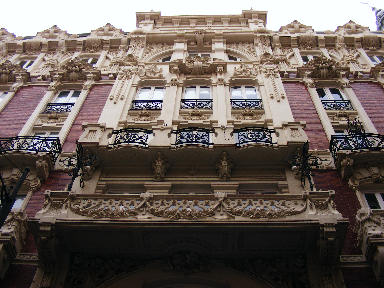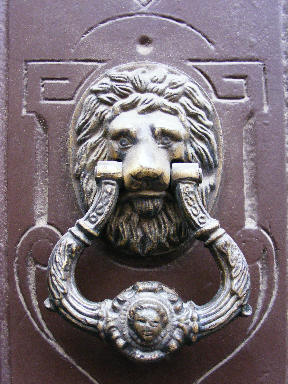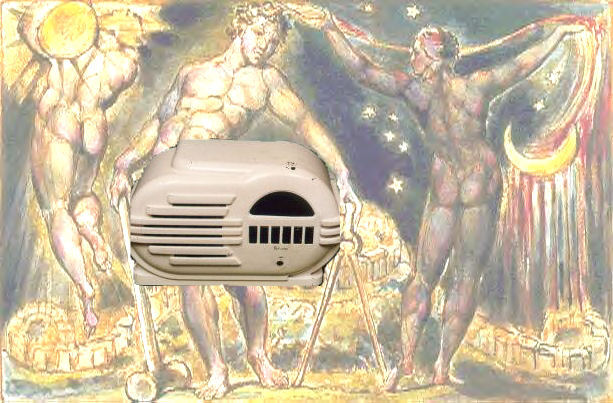Different sorts of silence in radio drama
| 'Dead air' - technical fault (BELOW) |
| Signifying silence in dialogue (BELOW) |
| Silence as signifying scene end or scene closure (BELOW) |
| Silent presence (BELOW) |
| Ambient silence (BELOW) |

| The listener does not read the silence as signifying meaning. |
| A technical mistake, the fault of the director |
| EXAMPLE: too long gap in dialogue flow |
| Note the pause - what is the difference? - and how to measure it in terms of the listener's response - seconds, milliseconds etc. |
| When does the listener get alarmed? |
| Absence of sound is 'death', hence the force of the technical term. Normality is continuous sound, a continuous flow. |
| Use of silence, short breaks, frames, to define the limits and transitions between programmes. (Crisell) |
| Values of continuity and fullness |
|
An example from radio actuality is a gap during the
news, where a news tape or live relay does not come through. Weiss 57 on the film sound track:
McWhinnie, Donald, 1959, The Art of Radio, London: Faber and Faber, 126
Silence as signifying scene end or scene closure There is a gap of 2 to 3 seconds between scenes, if there
is a fade down/out, or straight cut, at the end of a scene. And
this is followed by a silence, rather than a crossfade, or a
straight cut into the next scene. Note the traditional 'Archers fade' - fade down into 2 or 3 seconds silence - fade in next scene. A scene can be given excitement by lack of signalling scene closure. This is a particular technique of playwright Minghella.The end of the scene comes as a shock.
Silent presence It reinforces the signifying power of address by the other characters, directed to the silent one. Cf. Anthony Minghella's 'Cigarettes and Chocolate': "The silence is beautiful. Last year it was cigarettes. The year before chocolate. But this is the best." See Crisell 152 for "unheard" silences. (Below) Pinter's 'A Slight Ache'
There can be a strong contrast between different acoustics, moving from a silent acoustic (not necessarily in a 'dead' rather than a 'live' studio).
In 'The Goons', the audience are invited to listen to the sound of an empty room. ('Room tone' existed as a variety of effects on gramophone records, and on film sound tracks. The joke is that no FX gramophone effect was played. The sound technicians remained immobile, having been working frantically up to this). ===================================================== We can use an approach from semiotics - what does silence signify? It always signifies. ========================================================== Here are two theoretical discussions of silence by Andrew Crisell: Crisell, Andrew, 2nd ed., 1994, Understanding Radio, New York and London: Routledge. pages 52-3 Though it is natural for us to speak of radio as a sound medium
we should remember that the absence of sound can also be heard.
But such silences or pauses can suggest not only physical actions but abstract, dramatic qualities, generate pathos or irony by confirming or countering the words which surround them. Example of Jack Benny skit The skit consists of a confrontation between Benny and a mugger on the street. Says the mugger: 'Your money or your life'. Prolonged pause: growing laughter; then applause as the audience gradually realises what Benny must be thinking, and eventually responds to the information communicated by the silence and to its comic implications. (Fink, 1981, 202) How, then, does the listener discriminate among these various negative and positive functions of silence? His guide is clearly the context - in the first instance whether any noise frames the silence and in the second, what that noise signifies. See Silences and the
overall design
Crisell, Andrew, 2nd ed., 1994, Understanding Radio. New York and London: Routledge. page 152 In these forms of drama silence has an important role to play since radio endows it with a peculiar potency. In what respect? Sounds, the very essence of radio, exist in time and constantly evaporate. If they are not renewed silence imposes itself. This also occurs in the theatre and cinema but is not important since these media provide images which exist in space and which therefore endure through both sounds and silences. In radio, however, silence is visually unfilled and therefore absolute. Much more than in the theatre or cinema it is a quality which is noticed, heard, listened to. The difference is, or used to be, well illustrated by radio programmes which preview new films by featuring unedited excerpts from their sound-tracks. To the unseeing listener the pauses in the dialogue seem pointless and interminable. Indeed, so threatening is silence to the radio medium that if it persists for more than a few seconds the listener rightly concludes that the station transmitter or her own receiver has either broken down or been switched off. But silence on the radio does not simply consist of audible
breaks in the sound-flow: there are also 'unheard' silences -
for instance, the failure of a character to contribute to an
unbroken In various ways, then, radio is positively besieged by silence - a silence which portends non-existence, annihilation. These nihilistic tendencies also remind us that the relationship between word and thing in radio is rather more complex than we have assumed. We have so far assumed that however variously we may picture it, an object exists simply by being named; but we should note that its existence is unlike that of physical objects since there is a sense in which it ceases to exist as soon as the naming is concluded. Nevertheless, this has its advantages: since radio's reality requires constant renewal, since it is susceptible to change and even annihilation, the medium is much better suited than the conventional theatre to the presentation of fluid, indeterminate worlds, especially those of absurdist drama.
But even when radio presents a world which is internally stable and consistent, there may be things within that world whose ontological status is left deliberately ambiguous - and such ambiguity may also be suggested by heard or unheard silences. |
|
|







